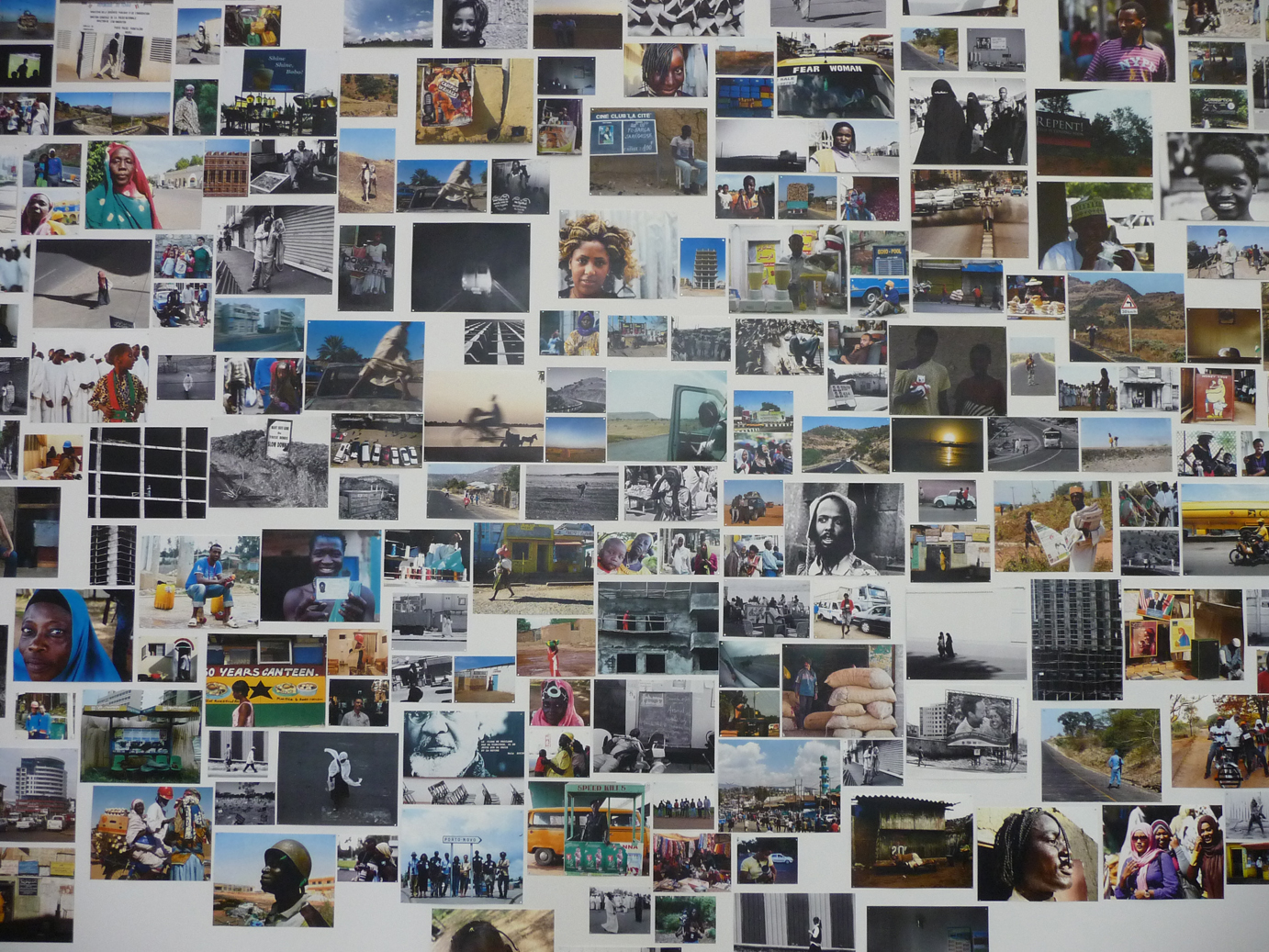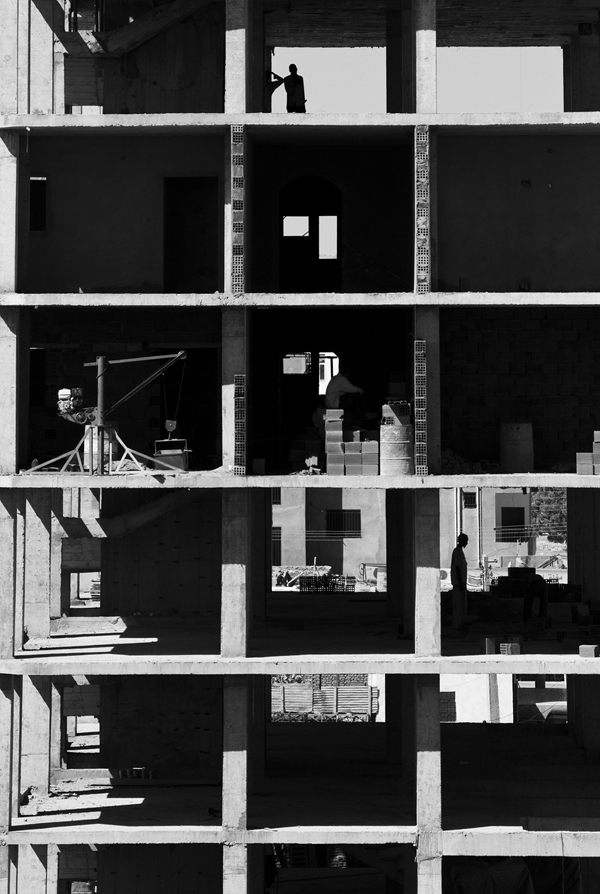on display in the 2012 New Museum Triennial, “The Ungovernables” – February 15, 2012 to April 22, 2012

Invisible Borders Trans-African Photography Project (Exhibition view). Courtesy Invisible Borders Trans-African Photographers Organization, Lagos, Nigeria. Photo : Shelley Rice
On view at the New Museum in Manhattan this spring is the 2012 Triennial, billed as the only recurring exhibition in the United States devoted to presenting young artists from around the globe. Curated by Eungie Joo, the show features 34 artists, artist groups and temporary collectives. Entitled “The Ungovernables,” the exhibition highlights artists born between the mid 1970s and the mid 1980s in countries as widespread as India, Brazil, Lebanon, China, Thailand, Mexico, Egypt and Korea as well as North America; many of the 50 participants have never before exhibited in the United States. The curator wanted to emphasize the resilience and hopefulness of a generation marked by local and global political, economic, religious and military crises, and signal the museum’s interest in cultural production outside of the usual Western centers. There’s a big range of work, some of it good and some of it bad, in this show; “The Ungovernables” is a sprawling and, yes, unruly affair. Rather than cover the entire exhibit, I asked my friends Jennifer Bajorek and Erin Haney, scholars of African photography and archives, to focus on a particular collective they first encountered in Mali in 2009; the group is represented by photographs, videos, and a blog on the first floor of the museum. Centering, as the wall text announces, on annual road trips taken by 10-12 photographers and writers traveling by land across the “invisible” barriers that separate nationals and people on the continent, this Trans-African project is “an attempt to disrupt the randomness of the borders as they exist and acquire a more realistic sense of the similarities and differences between peoples suggested by cultural and geographic divides.”
SR
Invisible Borders Collective (Founded 2009, Lagos)
Nike Adesuyi-Ojeikere, Kemi Akin-Nibosun, Lucy Azubuike, Unoma Giese, Emmanuel Iduma, Uche James-Iroha, Ala Khier, Chidinma Nnorom, Nana Oforiatta-Ayim, Amaize Ojeikere, Charles Okereke, Emeka Okereke, Ray-Daniels Okeugo, Uche Okpa-Iroha, Tom Saater and Jumoke Sanwo
« We met up with the group of Nigerian photographers at the Bla-Bla in Bamako in November 2009. Exhausted from the Rencontres, they faced a long journey back to Lagos on public transport the next day. Lucy (Azubuike) and Unoma (Giese) recounted outrageous bits of their trip from Lagos; Emeka (Okereke) filled us in as the stars came out overhead.
The inconveniences and indignities presented at each national frontier were the main theme, and performance, of Invisible Borders at Bamako that year. A broken-down van, Accra’s car parts markets (unfortunately closed by 3 am), endless bribes paid, language barriers, all needled the Lagosians, known for their can-do attitude. They were anticipating some discord, not to mention more expenditures, come morning.
They were, of course, going to be snapping pictures the whole time.

Invisible Borders Trans-African Photography Project (Detail). Courtesy Invisible Borders Trans-African Photographers Organization, Lagos, Nigeria. Photo : Shelley Rice
The idea behind that first journey had been simple — an experiment. Instead of taking the Air France tickets offered by the Rencontres’ organizers, which would have limited Nigerian participation to a handful of exhibiting photographers, the group decided to pool their money and travel overland, making it possible for a much larger group of photographers to attend. The initiative’s original target — the unimaginative nature of the biennial’s travel protocols, for an exhibition that had been elaborated on the theme of “Borders” that year! — was soon eclipsed by a changed experience of African geography, and a desire to chronicle it.
Fast forward three years: the roving band of photographers has already transformed itself several times. Their project — now funded by an impressive array of backers — has grown to encompass at least one new overland itinerary every year, always to a photography festival in Africa. No longer exclusively Nigerian, the group is challenging itself to reflect on the borders crossed in a kaleidoscope of new ways. The trip across Sudan, and the addition of Sudanese photographer Ala Kheir, opened unprecedented vistas on subjects as diverse as Darfur and Internet connectivity. Who knew Khartoum had the best wi-fi access of the cities toured in 2011?
The strengths of the project lie in its multi-perspectival qualities: the artists work on their own independent projects as they go. Equally important are conversations with a growing network of photographers. Advice from more established artists and professional-level training are in demand, and at a premium. This explains why young collectives crop up in African cities with few institutions and still fewer opportunities for critical exchange with working artists. Invisible Borders follows in a long line of trans-African activism seeking to expand this dialogue. Harder to sustain are works that evoke the variegation and depth of those conversations. Longer stays in Khartoum or Addis Ababa might afford more provocative images. Their blog traces their movements for audiences for whom connections are no big deal; only a few African cities and territories afford such connections. Renegade exhibitions, impromptu programs, plein-air projections: all could entail more fruitful in-situ exchanges. At the New Museum in February, Emeka answered a question about disparities in connectivity in trans-African contexts and consequences for creative projects optimistically: “It will come.»
Copyright 2012 Jennifer Bajorek and Erin Haney
